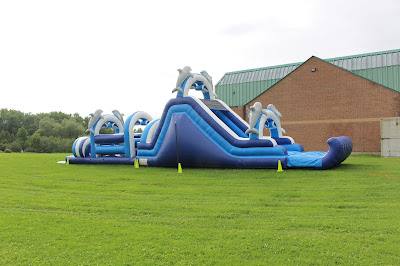THE RIDEAU WATERWAY
The Rideau Waterway stretches 202 kilometres through a chain of lakes, rivers and canals, inking Canada's capital, Ottawa, to the historic city of Kingston on Lake Ontario. To follow the Rideau Waterway is not only a trip through some of the most picturesque countryside in eastern Ontario, but also a voyage through history.
The Rideau Canal National Historical Site, the core of the Rideau Waterway, was built between 1826 and 1832. It is the oldest continuously operating canal in North America. Originally conceived as a key part of a military defence system for Upper Canada (now Ontario), it soon became a route for local trade and luxury steamers. Considered one of the greatest engineering feats of the 19th century, 19 kilometres of canals and 45 locks raise vessels 83 metres from the Ottawa River to the height of land at Newboro, and lower them to Lake Ontario. Today the log rafts and steamers of the 19th century have given way to pleasure craft, but the tradition of hand-operating the locks and swing bridges continues. Along the Rideau, one finds a unique blend of wildlife, city life and country life, of past and present, nature and culture. Designation of the Rideau Waterway as a Canadain Heritage River not only is testimony to its significance as a national treasure, but will also ensure stewardship and wise management of the waterway, and will safeguard the integrity of its unique resources for all time.
VOIE NAVIGABLE DU CANAL RIDEAU
La voie navigable du canal Rideau s'étend sur 202 kilomètres, traversant une chaine de lacs, de rivières et de canaux et reliant Ottawa, capitale du Canada, à la ville historique de Kingston sur le lac Ontario. Une promenade le long de la voie navigable du canal Rideau représente non seulement une excursion parmi certains des paysages les plus pittoresques de l'est de l'Ontario, mais aussi un voyage à travers l'histoire.
Le lieu historique national du canal Rideau, cœur de la voie navigable du canal Rideau, a été construit entre 1826 et 1832. Il est le plus vieux canal continuellement en exploitation en Amérique du Nord. À l'orignie, le canal avait été conçu pour défendre le Haut-Canada (aujourd'hui l'Ontario) et représentait une composante essentielle du système de défense. Il est rapidement devenu une route pour le commerce local et les luxueux navires à vapeur. Le canal Rideau est considéré comme étant une des plus grandes réalisations techniques du XIXe siècle; 19 kilomètres de canaux et 45 écluses hissent les embarcations de 83 mètres à partir de la rivière des Outaouais jusqu'à la hauteur des terres de Newboro, et leur permettent de descendre sur la lac Ontario. Les radeaux de bois et les navires à vapeur du XIXe siècle ont cédé la voie aux navires de plaisance, bien que la tradition des ponts tournants et celle d'ouvrir et de fermer les éxcluses à la manivelle demeurent encore aujourd'hui. Le long du canal Rideau, on peut admirer le mélange unique d'une faune sauvage, d'une vie rurale et d'un environnement urbain ainsi que du passé et du présent, de la nature et de la culture. La voie navigable du canal Rideau a été désignée rivière du Patrimoine canadien en témoignage de son importance en tant que trésor national. De ce fait, la bonne intendance de son environnement et sa getstion intelligente n'en seront qu'accentuées et l'intégrité de ses ressources uniques sera sauvegardée à jamais.




